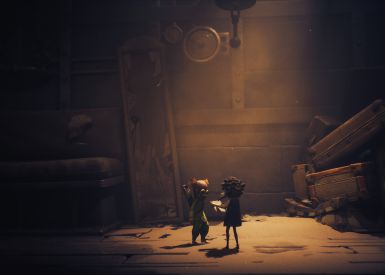Star Wars: The Force Awakens made one thing extremely clear—the New Republic is far more brittle than the Old Republic. That’s no surprise; the latter lasted for 25,000 years and the new one is just a few decades old. The New Republic’s problems will be enduring. The Old Republic, however, was a remarkable bastion of stability for a simple reason: The Jedi Order. If you know your Isaac Asimov, consider this. The Old Republic survived because the Jedi Order acted as the Star Wars equivalent to the Second Foundation.
The Jedi Are The Second Foundation
The Old Republic of Star Wars accomplished what Hari Seldon set out to do in Isaac Asimov’s Foundation series (spoilers for the Foundation trilogy ahead). Seldon created two Foundations at opposite ends of the galaxy to reunite the Milky Way in lasting peace under one united empire. Although the Foundations arose in the wake of the collapse of the First Galactic Empire and the Old Republic existed since time immemorial, they have great similarities. Hari Seldon and the early Jedi both recognized that a stable political order wasn’t enough; any such organization, over a long enough period of time, would inevitably become unstable, autocratic or corrupt.
The key to the Foundation’s success was the Second Foundation, a secret order of psychohistorians who could adjust the course of Hari Seldon’s plan and guide the Foundation along toward its ultimate goal. They worked in secret, from the shadows, and few knew or believed in their existence. And almost none at all knew that they had over time become a race of telepaths, capable of altering other people’s emotions in service of the Seldon Plan.

The Jedi Order is much like the Second Foundation. The Jedi aren’t quite as secretive—everyone knew the Jedi existed, at least during the Old Republic era—but their influence was largely felt behind the scenes, in diplomacy and in countering high-level galactic threats. But their real importance was in maintaining galactic stability. We see Obi-Wan Kenobi and Qui-Gon Jinn trying to do it in The Phantom Menace. Their mission had longer-term adverse consequences, but tens of thousands of similar Jedi missions succeeded over the generations, ensuring the Old Republic stayed fundamentally whole—even in times of crisis.
Only because of the Jedi did the Republic (barely) survive weak periods like the Republic Dark Age—but such eras, when the Jedi had to step out of the shadows and become a direct governing and military class, often brought the Republic itself to its weakest points. Like the Second Foundation, the Jedi work best as a secret ruling class, influencing events indirectly from the shadows. In the open, they’re vulnerable—and easily resented.
If you’re sad that Isaac Asimov never finished the tale of the Foundations, look to Star Wars for what the Second Galactic Empire could have been (but with aliens, instead of Galaxia)—a fundamentally stable, if decentralized, order ruled by a bureaucratic class, with powerful telepaths manipulating things behind the scenes (what do you think a Jedi mind trick is?).
Of course, the Old Republic eventually failed—for the same reason the Second Foundation once very nearly failed. In both universes, a truly exceptional individual came to power and targeted both of the self-perpetuating pillars of galactic stability directly. The Mule conquered the First Foundation and nearly destroyed the Second Foundation, which unlike the Jedi was truly secret. But Emperor Palpatine succeeded—he first coopted the Republic, then moved swiftly to destroy the Jedi, the one force that could still have restored stability. Only then was the Empire truly born. The effects of that destruction will reverberate for centuries. As The Force Awakens showed us, Palpatine’s legacy is not easily undone—and the galaxy may be broken forever.
The Jedi should have stayed more secret.
















